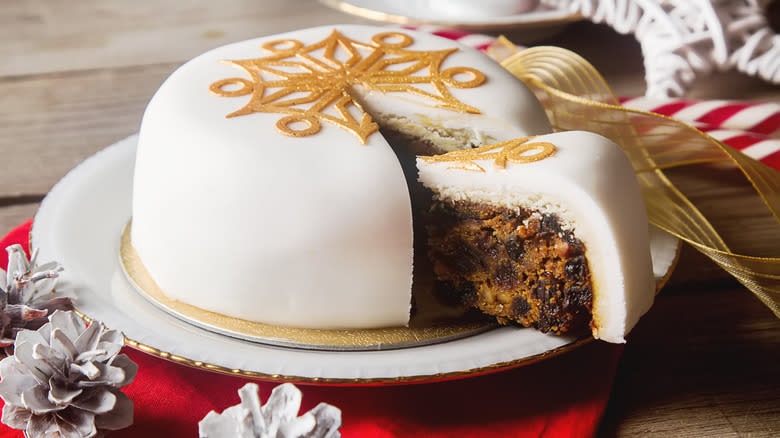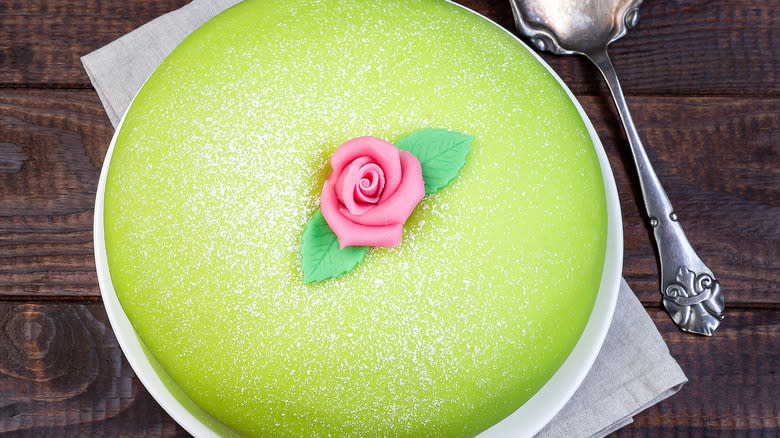Marzipan Cutouts Will Give Any Cake A Professional Look With Minimal Effort

So you've accomplished the seemingly arduous task of baking. You've precisely measured your baking ingredients, properly creamed your butter, and used some top tips to temper your chocolate to the perfect consistency. Now you're faced with the daunting task of decorating a cake. But before you begin, you brainstorm ways to beautify your bare, baked block. Shall you mirror-glaze it? Maybe frost it? And then, like a bag of almond flour falling off the pantry shelf, it hits you: marzipan. If you're going for that professional look, marzipan cutouts will be your best bet.
But what is marzipan, anyway? Originally known as marchpane, and not to be confused with almond paste, marzipan is a culinary paste made of sugar and almond. It often involves two common methods of making it, including the German and French techniques. All methods, however, lead to a smooth and moldable dough employed in cake decorating and finishing. And because of its pliable, clay-like texture, you can sculpt marzipan into several intricate shapes as well as smoothen it effortlessly to make your cake appear professional.
It is because of marzipan's smooth finish that many wedding and Christmas fruit cakes choose to don it. The truth is marzipan cutouts eliminate visible errors that any baker would be eager to bury. Not only that, but its moldable quality means you can fashion it into eye-catching toppings such as tiny carrots for carrot cake, or pink-colored roses for a sophisticated touch.
Read more: 30 Types Of Cake, Explained
Turning Marzipan Cutouts Into Elegant Designs

You only ever need a handful of ingredients to convert marzipan cutouts into outstanding designs. The first step is often to roll out marzipan dough large enough to drape over your cake. After covering the cake, color more marzipan using food coloring paste. Chefs usually prefer paste or gel, as liquid coloring tends to soften marzipan, making it harder to work with. The key is to pour a small amount into a jar and use a toothpick or cocktail stick to apply the coloring while working it in with your hands or a rolling pin. Once the color evenly distributes, the marzipan is left to dry overnight and is ready to cut into.
A plain cookie cutter will be just as handy for producing marzipan designs in batches. So, say you color the dough a dark green, let it dry, and roll it out once again as thinly as possible, go on to use a holly or ivy cutter to cut into the marzipan, and then leave the pieces to dry for 12 hours. Once dried, the leaves are firm to the touch and ready to stick to your cake.
For the finishing touches, place a leaf onto the plain, marzipan-covered cake and gently press it into the dough. Repeat for the remaining marzipan pieces as you let marzipan's magic transform the look of your cake almost instantly.
Read the original article on Tasting Table.

